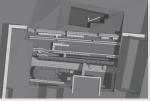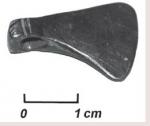Summary (English)
AQUAE CALIDAE – THERMA (Tsonya Drazheva, Dimcho Momchilov – karnobat.muzey@mail.bg) The pavement and the hypocaust were documented in the tepidarium. The eastern wall, 2 m wide, was constructed in opus mixtum with bands of four courses of bricks. The discovered length of the thermae was 33 m, oriented north – south. Longitudinal drains Nos. 1 and 2 were explored under the floor of the apodyterium. The drains were 62 cm wide and 50 cm high and their walls were constructed of small reused ashlars and uneven stones bonded with mortar, while their bottoms were paved with bricks, 56 cm by 30 cm in size. The finds in the drains included part of a gilded silver mirror of the 1st – 2nd century AD, bronze coins of the Thracian King Rhoemetalces I (12 BC – AD 12), Claudius and Constantine the Great, and terracotta lamps. In addition, 86 coins from the end of the 5th – 1st centuries BC (mostly coins of Mesambria and Apollonia minted from the end of the 5th to 3rd century BC), a silver pendant in the shape of a small axe, silver jewelry and a cameo from a finger-ring showing an eagle were found in the earth from the cleaning of the catchment of the mineral spring situated in the central part of the thermae. The narthex of the church was discovered, 12.60 m long and 3 m wide. Two construction periods were documented: 6th century AD and 11th – 13th centuries. The earlier church was a basilica with a central nave 6.40 m wide and two side aisles, each one 3.20 m wide. The finds included a bronze cross – encolpion of the 11th century, four terracotta rosettes from the outer architectural decoration of the church and pottery. A sondage was carried out in the fortress built during the reign of Justinian I. Part of a room with an entrance 2.35 m wide and a wall of the 6th century AD built in opus mixtum were discovered. Two Byzantine lead seals of the 11th century were found. The mediaeval reconstruction of Aquae Calidae – Therma Fortress dated to the second half of the 11th century and it functioned until the beginning of the 15th century.
- Tsonya Drazheva - Regional Museum – Burgas
- Dimcho Momchilov - Museum of History – Karnobat
Director
Team
Research Body
- Regional Museum – Burgas






![Download [PDF]](/excavation/skins/fasti/images/results/download_sml.png)

